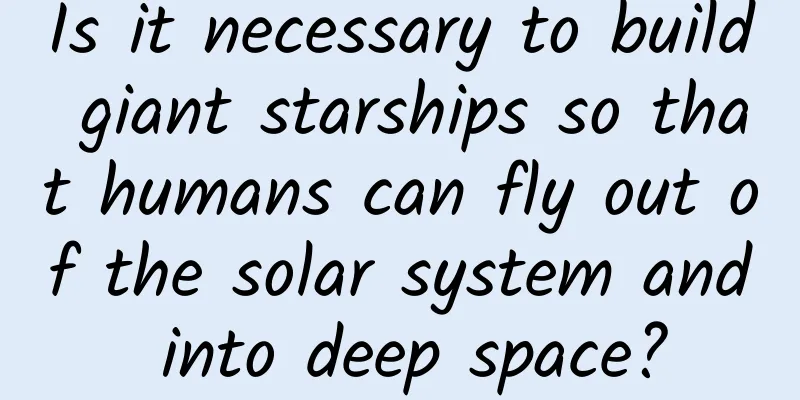Why can't we feel the earth spinning?

|
Regarding rotation, it's not that simple. By Paul Davies Translation | Bai Jiangzhu Many people are afraid of flying, especially when taking off. But the problem I face is different from theirs: my stress comes from the fear of missing the flight. Even if I get on the plane in time, I will fall asleep due to excessive nervousness when it is about to take off. When I wake up half an hour later, I often can't tell whether the plane is still on the runway or on the way to Los Angeles. The key problem is that we cannot tell from inside an airplane whether it is moving. Of course, if the airplane is climbing or descending, it is easy to feel it, but when it is flying steadily through the air, this movement is difficult to detect. Galileo was the first to clearly state this problem, and pointed out that uniform speed can only be measured in the presence of a reference. For example, the speed shown on the dashboard of a car is the speed of the car relative to the road, and the speed of an airplane is its speed relative to the ground or air. Although physicists long ago determined that uniform motion is only relative, some people still wonder how fast the Earth is moving as it orbits the sun and moves through the galaxy. We can't feel this motion, but we are moving through space, which means that if we use ourselves as a reference point, space is constantly passing through our bodies without us realizing it. So how fast is space moving? How many liters of space are passing through our bodies every second without us noticing? After Galileo pointed out the problem of reference points, people realized that there seemed to be no physical device that could measure the uniform motion of space. We can't even reach our hands into the void around us to detect the "air currents" of space passing by. So is there any non-physical way to measure it? At the end of the 19th century, a new possibility emerged: maybe we could use light to measure the speed of the Earth's movement through space? Physicists at the time imagined that space was filled with a ghostly, jelly-like substance they called "ether," and they viewed light waves as vibrations that traveled through the ether at a specific speed (the speed of light). Physicists invented a variety of optical instruments to try to measure the speed of the Earth's movement through the ether. After several years of hard work, they came up with a result of 0. This result showed that the Earth was not moving at all in space (ether)! This obviously didn't make sense. There was an obvious contradiction between Galileo's principle of the relativity of uniform motion and the theory that light traveled at a fixed speed. Someone had to step up and reevaluate the nature of space, time, and motion, as well as the properties of light. Einstein accepted the challenge and rose to fame after publishing his first famous paper on relativity in 1905. Einstein refuted the concept of the ether, claiming that the speed of light is constant, but the observer who measures it is in motion. At the same time, he reiterated Galileo's position that uniform motion is always relative to other objects. He pointed out that exploring the speed of objects relative to space is not only an impossible task, but also meaningless. This is all well and good, but what about non-uniform motion (motion with acceleration)? We can measure this kind of motion without much effort, for example, if my coffee spills because of a plane's turbulence, I don't even have to look out the window to sense that the plane's uniform motion through the air has been disturbed. Acceleration is a change in speed, and we can sense it happening. If you slam on the brakes while driving, your body pitches forward; if you jerk the steering wheel, your body slams awkwardly into the door of your car. Both of these are examples of acceleration, the former a change in speed and the latter a change in direction. Rotation at a constant speed can also produce acceleration. Newton gave a related example: water in a rotating bucket will form a vortex, low in the middle and high around. We usually attribute this phenomenon to centrifugal force. To answer the question "Is the bucket rotating?", you can get the answer immediately by observing whether the water surface is calm, without confirming whether it is moving relative to the ground. This example reminded Newton that rotation and accelerated motion do not need to be measured with reference to other material systems. These motions are absolute. In a nutshell, acceleration is relative to absolute space itself. But not everyone agreed with his point of view. Until the 20th century, some scientists believed that even if it is rotation, we must understand it as relative motion. So, what is the reference? In the past, physicists often said that it was relative to "fixed stars." However, stars are not eternal and unchanging, they are just so far away from us that we ignore their movement. Perhaps a better way to put it is: rotation is relative to distant celestial bodies in the universe. To better understand this sentence, you can imagine that you are sitting on the big pendulum in the playground with your eyes closed, and it is spinning at a very fast speed. Now open your eyes and look up, what do you see? You see the rotating stars. When the stars stop rotating, you will know that this big pendulum adventure is finally over, and quickly unbuckle your seat belt and get off! This everyday experience led some people, most notably the Austrian physicist and philosopher Ernst Mach, to see distant stars as the source of their sense of acceleration. Yes, the unit used to describe the speed of an airplane is named after him. Mach said that the reason you feel yourself being pulled toward the edge of a revolving amusement park seat or your stomach churning as an elevator suddenly drops is because the stars are pulling on you. It was a fascinating theory, now known as Mach's principle. Many people were drawn to it, including Albert Einstein, who believed that all motion was relative, not just uniform motion. Einstein hoped to incorporate Mach's principle into his general theory of relativity, arguing that the combined effects of all the distant stars and galaxies would produce locally detectable effects, one of which was centrifugal force. The most beautiful theory ever Hailed as the highest achievement of human intelligence, general relativity is both a scientific theory and a work of art. It cleverly combines space, time, matter and forces in a series of equations. Unlike many bottom-up physical theories, general relativity stems from some very grand principles, such as the fact that all physical properties must be independent of the indicators used to describe them. The geometry of objects is determined by the arrangement of matter and energy in space. Newton's gravity is not a concrete thing, but only an evolving, ever-changing geometry in which matter churns and light travels. Newton's somewhat dull concept of "absolute emptiness" is replaced by the concept of space: space is a dynamic entity that can stretch, shrink, twist, bend, pulsate and tremble, and transmit energy waves in the form of vibrations throughout the universe at the speed of light. General relativity has been unassailable so far, and even today, 100 years after Einstein created this brilliant theory, no observations have been found to contradict it. Unfortunately, this work was not successful. Einstein's general theory of relativity predicts that if a planet rotates in a vacuum, its equator will bulge like Earth's due to its rotation, even if we do not measure its motion with reference to any "fixed stars." Einstein's theory is the most accurate description of gravity to date, and it confirms Newton's view that rotation is absolute rather than relative. Although we cannot have a meaningful discussion about speeds in space, it is still valuable to discuss the acceleration of objects in a vacuum. Yet that’s not the whole story. Some physicists and cosmologists are trying to tinker with some of the subtler equations of Mach’s principle, a puzzle that has yet to be solved. Indeed, many of my colleagues sometimes imagine space, as Newton did, as something, and sometimes imagine it as nothing. The beauty of Mach’s principle is that it connects everyday human experience—like the spinning sensation of a pendulum—with the structure of the universe. The poet Francis Thompson celebrated this beautiful connection in these lines: God created all things, Near or far; Hazy and mysterious, connected to each other; Pick a flower, Ten thousand stars are twinkling. About the Author Paul Davies (1946-), a theoretical physicist and astrobiologist, is the director of the Center for Beyond Basic Concepts in Science at Arizona State University and chairs the SETI post-detection mission team. He is also a science writer and has written more than 20 books, including God and the New Physics, The Mind of God, The Last Three Minutes, About Time: Einstein's Unfinished Revolution, and How to Build a Time Machine. This article is authorized to be excerpted from Chapter 7 of "Who Will Eat Our Universe?" (Nautilus, CITIC Press). Special Tips 1. Go to the "Featured Column" at the bottom of the menu of the "Fanpu" WeChat public account to read a series of popular science articles on different topics. 2. Fanpu provides a function to search articles by month. Follow the official account and reply with the four-digit year + month, such as "1903", to get the article index for March 2019, and so on. Copyright statement: Personal forwarding is welcome. Any form of media or organization is not allowed to reprint or excerpt without authorization. For reprint authorization, please contact the backstage of the "Fanpu" WeChat public account. |
<<: They are the unsung heroes behind the exploration of manned spaceflight in the last century
>>: When people reach middle age, their bodies become more and more round. What's going on?
Recommend
Punk health care: drinking alcohol and taking liver protection tablets actually doubles the damage to the liver!
The liver is an important immune organ in the hum...
How to find user growth points? Build a Mini Program User Growth Model
1. If a business is not growing, it is dying I ha...
The woman who brought her whole family to Beijing and was diagnosed with the virus was fired by an American company, and Ms. Li was punished for concealing her illness!
Introduction: According to reports, Ms. Li, a pat...
Amazon advertising, Amazon advertising placement
In the process of "pushing rankings" , ...
iPhone is also affected. Why can’t fingerprint recognition be performed on sweaty hands?
Fingerprints have become almost synonymous with b...
Zhihu brand promotion strategy!
Brand marketing on the Internet has always been a...
Can't eat before colonoscopy? You can eat this
Author: Lv Zemin Han Many people have had the exp...
The sales data analysis ideas you must sort out before "Double 11"
The case is this: An e-commerce company that sell...
Is it better to use CDN or high-defense server configuration for server defense?
Is it better to use CDN or high-defense server co...
How can advertisers use Xiaohongshu KOL to promote Xiaohongshu?
Xiaohongshu is known as the "overseas shoppi...
Giant Panda: Why are they still fat even though they have “diet meals” every day?
For humans, a "high-fiber, low-fat" die...
Work hard to build a world-class science and technology power
General Secretary Xi Jinping pointed out that my ...
Why are Silicon Valley CEOs obsessed with artificial intelligence?
[[161924]] Jarvis, the artificial intelligence bu...
What is the focus of brand marketing in 2021?
With the disappearance of traffic dividends, the ...
With raw material shortages and high technological barriers, when will the chip shortage crisis be alleviated?
Last November, a piece of news appeared in the Pe...









